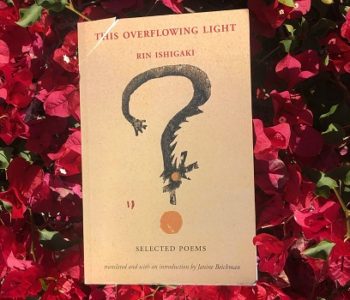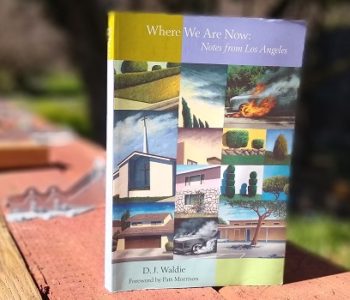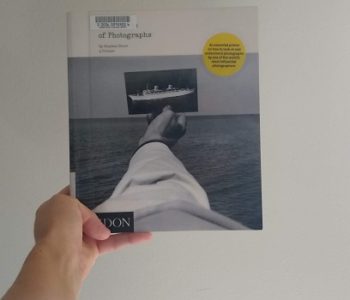 Book Review
Book Review
‘Essayism’ by Brian Dillon is Dark, Bright Bricolage
A BOOK REVIEW OF BRIAN DILLON’S ESSAYISM: ON FORM, FEELING, AND NONFICTION
Bricolage. Collage. Geodes. Bright silver ore running through boulders. Jagged fragments. Stained glass shatters. Crystalline snowflakes, gathered. All of these descriptions come to mind when trying to define Brian Dillon’s collection of essays on essays entitled Essayism: On Form, Feeling, and Nonfiction. And I think the author would approve, since his work revels in the curious lists, fragments, and assemblages found in compositions both familiar and obscure.

Dillon’s 2017 collection of pieces about pieces, essays about essays, writing about writing, is surely intended for true bibliophiles. We love to read about how we read and this text indulges in the textual experience. For the writer-reader, the harvest of plowing through this book is literary animus, from an Essayism book review, to purring plans to write papers that spurn traditional essay hem-lines and veer towards poetry.
Essayism can be summed up in an aphorism: Essayism is the kind of text that makes me want to write dark, bright potpourri-type sentences to describe essayism. I think Dillon would approve of that as well, since his book includes a lively look at the role of aphorisms in literary works.
It’s a real joy to read a book where the author is not simply attuned to, but is vocally in love with — susceptible to — under the influence of — all the parts of belles-lettres that I too love as a writer. This is a book that practices what it sermonizes, and in doing so, serves as warm, gently breathing proof of its own thesis.
Essayism Book Review: Winged Content

To some extent, Essayism’s thesis lives in its subtitle: “On Form, Feeling, and Nonfiction.” Dillon’s explorations of the finest points of the essay form are punctuated — or rather, wrought — by heavy, heady-feeling nonfiction fragments of his own life, from his failed relationship, to his mother’s depression and death, to his father’s subsequent passing, to Dillon’s own descent into and diagnosis of depression.
I tend to avoid reading explicit accounts of pain and tragedy, simply because most people don’t write about those events well. However, Dillon succeeds here, primarily because of his imagery –“I never left the flat without feeling that I might blow away in the wind that ceaselessly attacked the town. I would turn into sand or spray” (77) — and the function of personal events as meta-ruminations about the reading and writing processes themselves. For Dillon, reading while depressed reveals writing to be a steady lens through which he can peer into the offing of his fuzzy state and alight upon a tangible territory. The book in my hand — the reader’s hand — serves as proof of that very writing, resulting in a strangely intimate connection with Dillon’s melancholic feelings.
Of course, Essayism also teems with Dillon’s feelings about certain texts, and also how those texts dredge up a certain type of feeling from readers, along with the feeling readers get while unraveling Dillon’s essays, illuminated by his thoughts on other essays, and then also the feelings of other writers mentioned in the book, and their own nonfictions, from Woolf’s sickness, to Sontag’s anxiety about her writerly form…
In other words, this is a multiplicitous book. Sedimentary. Kaleidoscopic. Onion-like. Russian-doll-ish. It fluctuates, builds and unravels, flutters from flower to flower, gathering pollen with finely haired feet without forgetting to render the light caught in the stained-glass patterns of its own wings.
Essayism Book Review: Strategic Scatterbrainedness

Essayism is a curated collection of some of the best essayists around, and appropriately, it came as a gift from Her Sails Filled With Dream blog author Carol Adams, a literary curator in her own right. Dillon sells his literary recommendations via careful plucking of vibrant (what a word ‘vibrant’ is, vibrating with the color of itself) passages, close reading when needed, and locus leaps — indeed, I think it’s the leaps I like best in this book. Dillon doesn’t exhaust his showcased essayists: he presents them, leaves them, occasionally comes back to them, and just as often, doesn’t.
There’s a wonderful sense of strategic scatterbrainedness in this collection, guided by a firm but vulnerable authorial hand that cups the clear waters of each choice text and takes a long sip before letting the rest flow back into the river so he can take another dip. Alternatively, when I read Essayism, I see a man rummaging through his books in his little room, stepping out into the balcony sunlight to better study a passage, but always returning into the indoor dimness to see what other paper treasures he owns.
The authors he pays homage to (Dillon chooses texts he primarily wants to exalt, rather than criticize) include some of my already-favorites — Virginia Woolf (indeed, I have an immediate bias towards Dillon’s book because of his love for Woolf, and you all knew she’d show up somewhere in this Essayism book review), Maggie Nelson, Gertrude Stein, Susan Sontag, Rebecca Solnit, etc. But Dillon also introduced me to and instantly wooed me to read authors such as William Gass. Here’s his analysis of Gass’s On Being Blue:
…most of Gass’s self-conscious experiment is going on at the level of the sentence, its style and especially its sound, rather than look-at-me games with plot and character. This is partly a matter of poetic influence — Stevens and Rilke have been constant references — but the presiding example is probably Gertrude Stein, about whom he has written several essays. On Being Blue is in thrall to her Tender Buttons and its incantatory way with the rhythms and phonics of everyday American speech.”
–Essayism pp. 53
and:
You could read Gass’s endless list-making as a sort of depressive rosary, or an addiction long detached from its instigating trauma…This is a short volume, less than a hundred pages, whose unlikely but direct ancestor is Robert Burton’s vast and swelling Anatomy of Melancholy: a book of which Gass once wrote that its lists “subside, only to resume in no time at all with words even more exotic, redolent, or chewy.” Like Burton, Gass can’t help being led by his appetite for language, even if it proves unsatisfying. “Chewy” seems the right word too for On Being Blue — it is a talismanic, self-contained book that each time I return to eat seems more giving, more delicious.”
–Essayism pp. 55
In this passage, Dillon’s own language is “chewy” and “delicious,” serving up delicacies as “depressive rosary” and “talismanic, self-contained book.” Through such rich diction, Dillon helps the analyzed text’s diction reverberate. He also has a knack for picking passages that pickle well and crunch even when read out of context: after learning about Gass, I ran upstairs in the library where I was reading and writing my Essayism book review and checked out all of the Gass options available — even one with a suspicious brown stain on it.
Other well-mined examples include this nugget from Stein:
Thinking of a sentence makes it very well I thank you. All these are varieties which do concern themselves with differences…
–Essayism quoting Gertrude Stein’s How to Write pp. 127
Think in stitches. Think in sentences. Think in settlements. Think in willows. Think in respect. Think in farther…
A sentence does not make a division…
A sentence is alright but a number of sentences make a paragraph and that is not alright.”
and this kernel from Schlegel:
A dialogue is a chain or garland of fragments. An exchange of letters is a dialogue on a larger scale, and memoirs constitute a system of fragments. But as yet no genre exists that is fragmentary both in form and content, simultaneously completely subjective and individual, and completely objective and like a necessary part in a system of all the sciences.”
–Essayism quoting Friedrich Schlegel’s Athenaeum Fragments pp. 82
Pithiness epitomized. Dillon spends a whole chapter/essay on aphorisms – defines them as “a sharp or pointed thing, violently deployed” (87) — so when he’s plucking textual evidence, it’s clear that he’s also employing his keen eye (and ear) for the meaty. Above all, Dillon is a master literary connoisseur and summarizer. He has a way of condensing authors’ biographical information into colorful, chimerical portraits you might find worn in lockets on the breasts of mythical beasts charged with protecting all the speckles of each writer’s soul post-mortem.
Essayism Book Review: Prismatic Structure

I love paying attention to books’ literal structures, including such interesting nuances as the almost-suffocating length of footnotes (i.e. David Foster Wallace) or typography (see my Stephen Shore Book Review). In the case of Essayism, the most striking aspects of the form are the varied anaphora at the start of each chapter title, the general brevity and abrupt ending of each essay, and the lack of a table of contents/chapter numbers.
There is no title at the start of each essay in Essayism. Rather, in dialogue with the book’s subtitle, the first “sentence” of each chapter begins “On…” followed by a subject that indicates the apparent focus to follow. For example, the first essay begins “On Essays and Essayists,” the second one starts, “On Origins,” and the third “On Essayism,” and so on. These introductory prepositional luges into the text stand slightly apart from the essay body in that they’re incomplete sentences, but simultaneously they’re also part of it, since they exist on the same line/within the same paragraph as the second sentence. Thus, in this book, with its absence both of titles in their traditional position centered above the the first line of each essay, and of chapter numbers, we seem to be reading a casual capricious conversation between book lovers rather than an organized, indexed collection of essays — and what a refreshing change of pace.
Indeed, Dillon’s text has some of the same in media res casualness as Brooks’s Maud Martha, in that each essay begins and ends spontaneously, at erratic point’s in time’s linear momentum. For example, the aptly introduced essay, “On Diverging,” dips out at the end of a tangential quote from Woolf’s essay “On Being Ill,” with Dillon’s next chapter beginning “On Consolation. I grew up, as people say, in a house of books” (102). The transitions in this book are sudden and sharp, serving to keep the reader vigilant. Moreover, the essays are all quite brief: they don’t run more than a few pages, which offers the reader relief from traditional pieces that continue on and on for the sake of fulfilling the full circuit of the essay form.
The book’s fragmentary organization is compounded by — invigorated by — the fact that it also contains no table of contents or index. Via these omissions, Essayism challenges traditionally plodding organization and chronology. Regulative numbers have been cast aside. If the reader wants to find something, they have to trek back through the text and dig in again to tug the lovely potato of a quote they were looking for from the soft soil of the page (although this got a tad annoying when I was particularly hungry for a certain potato).
Prismatic. Sundry. Sea glass nestled in sand. A literary medley. Through a turbulent structure, Brian Dillon’s Essayism: On Form, Feeling, and Nonfiction offers an analytical brightness found far too rarely in literary criticism texts.
Essayism Book Review: The Final Word

When we’re small and fall, skin tearing on asphalt, we run home and extend our tattered limbs to our mums to solve, salve, tweeze out the gravel and bright glass. How precious those bits are once extracted, with their plasma glow — the glow of us. Dillon’s text achieves the same painful clarity of this childhood transaction via literary quotes held up like extracted rocks and glass, the light showing off how deeply little things cut.
ISBN of Edition Read: 9781681372822
Notes of Oak Literary Blog Book Review Score for: Essayism: on Form, Feeling, and Nonfiction by Brian Dillon
8/10







